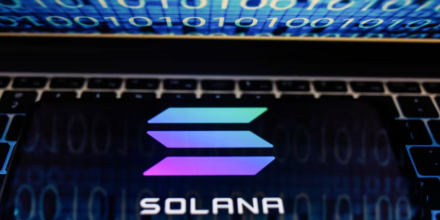Is anyone still doing airdrops full-time? Maybe you should consider getting a job.
Airdrops can't provide stability, but work can.
Airdrops can't provide stability, but work can.
Written by: OxTøchi
Translated by: Chopper, Foresight News
Most of the time, I find myself staring at the screen, endlessly scrolling through some “mining protocol” leaderboard or task page. To be honest, a few months ago this was still pretty exciting, but now it’s different—and not in a good way.
I’ve slowed down on these activities, not because I’ve lost interest, but because the rewards are increasingly disappointing and filled with uncertainty.
Now, I just want to invest my time in things that “compound over time,” things where “the effort you put in feels like accumulating capital.” If you know, you know.
I don’t want to be the kind of person sighing during a token TGE, and I definitely don’t want to curse out project founders’ families just because things didn’t go as expected.
Isn’t it time for a mindset shift?
Think about it: airdrops are supposed to be surprises, not salaries. But at some point, people started planning their lives around “lists of low-participation protocols that might give out money.” Honestly, I used to do this too, I won’t deny it.
One meager payout after another made me realize I need stability. Airdrops can’t provide stability, but work can—and I’m talking about jobs in the crypto industry.
Let’s think about the difference between the two:
With a job, you get paid every month. You provide value and get rewarded accordingly; you can accumulate skills, reputation, and connections—things that don’t disappear just because a project does. If the project grows, you grow with it!
Even if the project founder cashes out and leaves after the token launch, you can always switch jobs. Isn’t that better than “praying the team doesn’t run off with the rewards you earned from two years of frantic clicking”?
What jobs are there in the crypto industry?
The best thing about the crypto industry is: as long as you’re persistent and goal-oriented, almost any skill can be monetized.
The key here is to “do what makes you happy.” If you do what you love, you’re less likely to get burned out—after all, persistence is the core requirement, right?
I usually divide crypto jobs into three categories:
- Community: admin, community manager, brand ambassador;
- Content: long-form writer, KOL, research analyst, meme creator, fun post author;
- Technical: developer, engineer, bug bounty hunter, etc.
These roles aren’t mutually exclusive—many people can handle multiple roles at once.
For example, a technical developer might write technical explainers or moonlight as a meme creator—both of which are content roles. This kind of role overlap is common because what matters in crypto is participation, not job titles.
How to get a job in crypto?
- Improve your skills: learn new things, deepen your existing expertise;
- Get in early: get deeply involved in an ecosystem before it explodes;
- Build your personal brand: showcase your skills online;
- Leverage your social accounts: treat your accounts as proof of your work.
In today’s world, “having an online presence” is the most beneficial thing you can do for yourself. Share insights online, write articles, make memes—just take action and showcase your results. I’ve seen this method work myself, and many big accounts started this way. Here are a few examples of up-and-coming accounts:
Notice? They’re all “authorities” in their respective ecosystems because they picked one ecosystem, went all in, and kept at it until they got noticed. Another thing in common: if you look through their accounts, you can clearly see “proof of work.” Treat your social accounts like your resume!
If you want to get a job in crypto, you have to put in a lot of effort: participate in activities that generate compounding returns, do more than the average person, proactively showcase yourself—don’t just work quietly, let others see your value.
By the way, I haven’t talked much about technical jobs because I know nothing about tech—I really don’t understand that side of things.
Finally
This article isn’t telling you to “stop chasing airdrops,” but rather to treat airdrops as a “side hustle” while focusing on things that can bring stability to your life.
Many people think it’s hard to get a job in crypto, but you don’t have to blindly believe them—you can be different.
Disclaimer: The content of this article solely reflects the author's opinion and does not represent the platform in any capacity. This article is not intended to serve as a reference for making investment decisions.
You may also like
Hopes for a December rate cut fade? Bitcoin erases its yearly gains
After the release of the delayed U.S. September non-farm payroll data, which was postponed by 43 days, the market has almost abandoned expectations for a rate cut in December.

Gold Rush Handbook | Circle Arc Early Interaction Step-by-Step Guide
Remain proactive even during a sluggish market.

Mars Morning News | Nvidia's impressive earnings boost market confidence, while growing divisions in the Fed minutes cast doubt on a December rate cut
Nvidia's earnings report exceeded expectations, boosting market confidence and fueling the ongoing AI investment boom. The Federal Reserve minutes revealed increased disagreement over a possible rate cut in December. The crypto market is seeing ETF expansion but faces liquidity challenges. Ethereum has proposed EIL to address L2 fragmentation. A Cloudflare outage has raised concerns about the risks of centralized services. Summary generated by Mars AI. The accuracy and completeness of this summary are still being improved during iteration.

Surviving a 97% Crash: Solana’s Eight-Year Struggle Revealed—True Strength Never Follows the Script
Solana co-founder Anatoly Yakovenko reviewed the origins, development process, challenges faced, and future vision of Solana, emphasizing the transaction efficiency of a high-performance blockchain and the comprehensive integration of financial services. Summary generated by Mars AI. This summary was generated by the Mars AI model, and the accuracy and completeness of its content are still in the iterative update stage.

